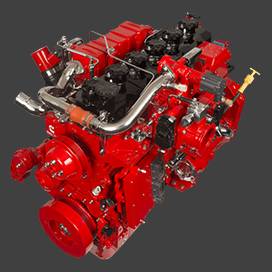Dec . 04, 2024 16:20 Back to list
brake drum failure analysis
Brake Drum Failure Analysis
Brake drums are critical components in the braking systems of various vehicles, including trucks, buses, and passenger cars. They play a vital role in converting the kinetic energy of a moving vehicle into thermal energy, effectively slowing down or stopping the vehicle. However, brake drum failures can lead to safety hazards, accidents, and costly repairs. Understanding the causes and implications of brake drum failures is essential for vehicle safety and maintenance.
Common Causes of Brake Drum Failures
1. Overheating
One of the primary reasons for brake drum failure is overheating. When brakes are applied, friction generates heat. If the heat dissipates too slowly, the drum can reach a temperature beyond its design limits. Overheating can lead to thermal cracking, distortion of the drum shape, and reduced braking efficiency. Factors contributing to overheating include excessive braking, prolonged usage on steep inclines, and the use of low-quality brake components.
2. Material Fatigue
Brake drums are subjected to repetitive stress cycles, which can lead to material fatigue over time. The constant expansion and contraction caused by heating and cooling, coupled with the weight of the vehicle, can weaken the material, eventually causing cracks or fractures. Using inferior materials or neglecting regular maintenance can accelerate the fatigue process.
3. Corrosion
Corrosion is another significant cause of brake drum failure. The brake drum is exposed to moisture, dirt, and road salt, which can lead to rust formation. Rust not only weakens the integrity of the drum but also affects its ability to dissipate heat, further contributing to overheating. Regular inspections and protective coatings can help mitigate corrosion risk.
4. Improper Installation
Improper installation of brake drums can lead to misalignment and uneven wear. Misalignment causes certain areas of the drum to experience excessive wear, resulting in premature failure. It is crucial for maintenance personnel to follow manufacturer guidelines during installation to ensure proper fit and function.
brake drum failure analysis

Normal wear and tear are inevitable as vehicles age and accumulate mileage. Brake drums naturally wear down over time due to the constant friction generated during braking. Routine inspections are essential for identifying wear patterns. If left unchecked, worn drums can lead to diminished braking performance and increased stopping distances.
Implications of Brake Drum Failures
The failure of brake drums can have dire consequences. Firstly, it poses a severe safety risk to the driver, passengers, and others on the road. Reduced braking efficiency can result in longer stopping distances, increasing the likelihood of accidents. Moreover, brake drum failures can lead to costly repair bills, including the need for complete replacement of not only the drum but also associated components such as brake shoes and hardware.
Furthermore, the reputation of a vehicle manufacturer can suffer if brake failures lead to accidents. Such incidents may result in lawsuits, recalls, and significant financial losses.
Prevention and Maintenance
To prevent brake drum failures, regular maintenance is essential. Vehicle owners should adhere to a routine inspection schedule, checking for signs of wear, overheating, and corrosion. This includes monitoring the condition of the brake shoes and ensuring that they are replaced when necessary.
Choosing high-quality brake components and following proper installation practices can also contribute to the longevity of brake drums. Lastly, educating drivers on the importance of smooth braking techniques can help reduce the chances of overheating and excessive wear.
Conclusion
Brake drum failure is a serious concern that can jeopardize vehicle safety and lead to significant costs. By understanding the common causes and implications of brake drum failures, vehicle owners and maintenance personnel can take proactive measures to ensure the effectiveness of their braking systems. Regular maintenance, prompt repairs, and informed driving practices are crucial for maintaining the integrity of this vital component of automotive safety.
-
ROR Web Development: Build Fast, Scalable, Secure Apps
NewsAug.17,2025
-
Scania Brake Drums: OEM Quality for Optimal Safety & Durability
NewsAug.16,2025
-
R.V.I: Advanced Remote Visual Inspection for Precision
NewsAug.15,2025
-
Discover HYUNDA: Innovative Vehicles, Equipment & Solutions
NewsAug.14,2025
-
R.V.I: Unlock Advanced Insights & Real-time Performance
NewsAug.13,2025
-
Kamaz Brake Drum: Durable & Reliable for Heavy Duty Trucks
NewsAug.12,2025
